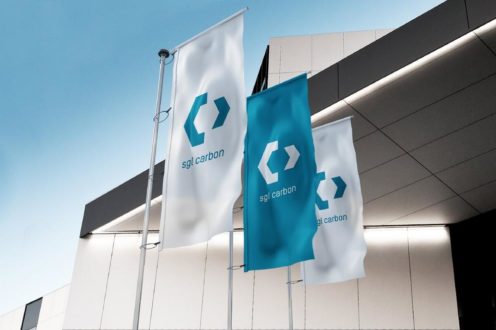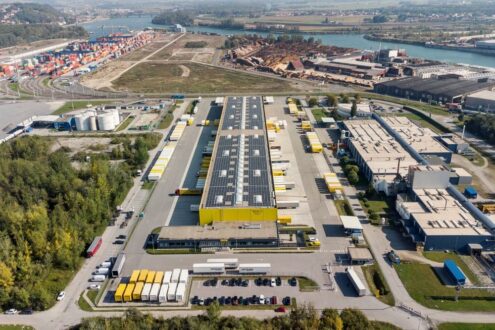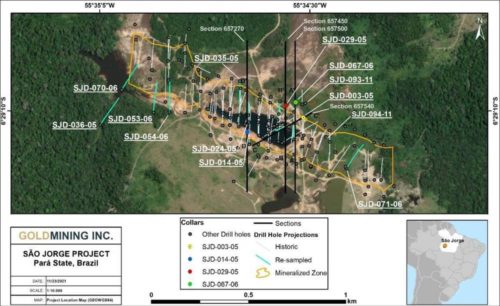
IsoEnergy and Purepoint Report Assay Grades of up to 5.4% U₃O₈ from Initial Holes at the Nova Discovery on the Dorado JV
Highlights
- Partial assay results received from two of eight diamond drill holes (“DDH”) completed during the summer program; additional program details are provided below.
- Select samples from hole PG25-05 averaged 2.2% U₃O₈ over 1.0 metre, including 5.4% U₃O₈ over 0.3 metres.
- Select samples from hole PG25-04 averaged 1.0% U₃O₈ over 0.6 metres.
- Assays validate the mineralization first intersected at Q48 hosted in a steeply dipping, brittle basement fault that remains open to the northeast.
- Complete assays on all holes will be processed and disclosed in due course.
- Follow-up drilling to extend the mineralized trend northeast is planned for the winter, when frozen ground enables land-based access.
“These assays validate the significance of the mineralization first intersected at Q48,” said Chris Frostad, President & CEO of Purepoint Uranium. “The grades confirm what we observed in the core and the strong radioactivity readings, establishing Nova as a robust uranium-bearing structure. With PG25-07 still to be assayed, we are continuing to build on the early success of this program.”
“Each new hole is giving us a clearer picture of the mineralized system at Nova,” said Philip Williams, CEO and Director of IsoEnergy. “The assays from PG25-04 and PG25-05 confirm the strength of the mineralization and reinforce the importance of this discovery. With PG25-07 delivering the highest radioactivity readings so far, we believe its assays will provide valuable insight into how this discovery is evolving.”
Q48 Target Area – DDHs PG25-03 to PG25-07A (5 DDH holes)
Drill hole PG25-03 tested the Eastern Q48 conductor approximately 800 metres southwest of historic hole GG22-32. The hole was collared with a -90 degree dip and encountered weak hematite, limonite and bleached sandstone to the unconformity at 259 metres. An 8.5-metre-wide zone of clay altered sandstone followed by a 1.5-metre-wide interval of core loss were encountered immediately above the unconformity. Initial basement rock included a 6-metre-wide zone of strongly paleoweathered pelitic gneiss with 0.5 metres averaging 690 CPS from the Mount Sopris 2PGA-1000 downhole gamma probe. The hole continues into a 3-metre-wide interval of weakly sheared, strongly hematite and chlorite altered, garnetiferous pelitic gneiss to a depth of 285 metres, then weakly chlorite altered pelitic gneiss to a depth of 308 metres. Unaltered pelitic gneiss was drilled to a depth of 315 metres then unaltered garnetiferous pelitic gneiss to the completion depth of 428 metres. The clay alteration encountered above the unconformity is similar to PG25-06, which is spatially associated with known mineralization, and is considered to warrant follow-up drilling this winter.
Drill hole PG25-04 targeted the Q48 conductor (Figure 1) located approximately 800 metres northwest of IsoEnergy’s 2022 drill holes (Figure 2). This drill hole, collared with an azimuth of 295 degrees and dip of -60 degrees, encountered Athabasca sandstone to a depth of 321 metres. Granitic gneiss and pegmatites were drilled to 393 metres then garnet-rich pelitic gneiss, with local pyrite and graphite, and pegmatites was drilled to the completion depth of 489 metres. Reddish-brown altered radioactive gouge seams, intersected between 386.3 and 386.9 metres, were hosted by a chloritized pegmatite and returned an average of 1.0% U3O8 over 0.6 metres (Table 1). The deeper radioactive intercept of 0.15% U3O8 over 0.4 metres starting at 409.1 metres was also hosted by a chloritized pegmatite.
Hole PG25-05 was collared 44 metres in front of PG25-04 and drilled using the same azimuth of 295 degrees and dip of -60 degrees. This hole intercepted the radioactive structure approximately 40 metres up-dip of PG25-04. The hole encountered the unconformity at 309 metres, paleoweathered granitic gneiss and pegmatites to 371 metres, then garnet-rich pelitic gneiss, locally with pyrite and graphite, to the completion depth of 498 metres. The central mineralized structure was hosted in a sheared / brecciated reddish-brown altered granitic gneiss that returned 1.0 metre of 2.2% U3O8 between 328.9 and 329.9 metres and included 0.3 metres of 5.4% U3O8 (Table 1).
Drill hole PG25-06 targeted the brittle fault associated with mineralization at the unconformity approximately 20 metres northeast of PG25-05 (Figure 2). This drill hole, collared with an azimuth of 310 degrees a dip of -64 degrees, encountered Athabasca sandstone to a depth of 316 metres. Clay alteration was encountered for 12 metres above the unconformity. Granitic gneiss displaying paleoweathering alteration was drilled to 341 metres then generally unaltered granite, pegmatites and pelitic gneiss was drilled to the completion depth of 482 metres. Projection of the Nova Discovery zone mineralization suggests the radioactive sandstone interval of 1,040 CPS over 2.3 metres in the downhole gamma probe, which occurs within core lost between 312.4 to 314.0m, is related to the primary mineralized structure.
Hole PG25-07A, collared from the PG25-04 drill pad using an azimuth of 310 degrees and dip of -61 degrees, was a 70 metre step out to the northeast of the PG25-05 mineralized intercept. The unconformity was intersected at a depth of 322 metres and the drill hole intercepted the radioactive structure approximately 40 metres up-dip of PG25-04. From the unconformity, granitic gneiss with pegmatitic intervals was encountered to a depth of 392 metres that was initially paleoweathered for 25 metres, unaltered for 36 metres, then became chloritized and silicified for 9 metres. Chloritized pelitic gneiss was then drilled from 392 to 441 metres, unaltered graphitic and pyritic pelitic gneiss to 459 metres, followed by unaltered granitic gneiss and pegmatites with minor pelitic gneiss to the completion depth of 548 metres.
The PG25-07A Nova zone mineralization starts within granitic gneiss at 382.3 metres and extends into pelitic gneiss to a depth of 396.3 metres returning an average of 11,100 cps over 14.0 metres. A primary mineralized structure of the Nova zone is hosted in sheared, reddish-brown altered granitic gneiss with pitchblende that returned an average of 82,300 cps over 0.6 metres with a peak of 110,800 cps. A second strongly mineralized interval occurs within lost pelitic gneiss core and returned an average of 46,000 cps over 0.4 metres.
Q2 Target Area – DDHs PG25-01 and PG25-02
PG25-01 was a 320-metre step-out along strike to the northeast of historic drilling and approximately 2.9 kilometres northeast along the same conductor on which 3.7% U3O8 over 0.6 metres was returned from hole HL-50 (Alonso et al., 1991). PG25-01, collared with an azimuth of 135 degrees and dip of -60 degrees, intersected the unconformity at a depth of 217 metres then paleoweathered pelitic gneiss to 246 metres followed by unaltered sillimanite-rich garnet biotite pelitic gneiss to 297 metres. The conductor was explained by a 15-metre-wide zone with observed fine disseminated graphite and pyrite hosted within a weakly chloritized pelitic gneiss with localized weak shears between 297 metres and 312 metres. Unaltered pelitic gneiss with variable amounts of garnet was intersected to 330 metres, followed by unaltered granitic gneiss to 359 metres. The hole was completed at a depth of 359 metres with no anomalous radioactivity being encountered.
PG25-02 was designed as a 390-metre step-out along strike to the northeast from PG25-01, to test an interpreted break and offset in the Q2 Grid conductor. PG25-02, with an azimuth of 135 degrees and dip of -60 degrees, intersected the unconformity at a depth of 219 metres. A 1-metre-wide zone of elevated radioactivity that starts in the sandstone above the unconformity and continues into the paleoweathered basement hosts the highest down hole gamma peak of 2,530 CPS. Below the unconformity is a 12-metre-wide zone of moderate to strong hematite altered pelitic gneiss followed by 52-metres of granite with weak to moderate hematite and weak chlorite alteration. The hole continues into an 8-metre-wide zone of unaltered pelitic gneiss before ending at a depth of 341 metres in an unaltered granite. The hole failed to explain the conductor and is interpreted to have been collared too far forward.
Turaco Target Area
Drilling is currently progressing within the Turaco Target Area (Figure 1).
About the Dorado JV Project
Dorado (Figure 3) is the flagship project of the IsoEnergy-Purepoint 50/50 joint venture, a partnership encompassing more than 98,000 hectares of prime uranium exploration ground. The Project includes the former Turnor Lake, Geiger, Edge, and Full Moon properties, all underlain by graphite-bearing lithologies and fault structures favorable for uranium deposition.
Recent drilling by IsoEnergy east of its Hurricane Deposit has intersected strongly elevated radioactivity in multiple holes. The anomalous radioactivity confirms the continuity of fertile graphitic rock package and further highlights the opportunity for additional high-grade discoveries across the region.
The shallow unconformity depths across the Dorado property—typically between 30 and 300 metres—allow for highly efficient drilling and rapid follow-up on results.
Gamma Logging and Geochemical Assaying
A Mount Sopris 2PGA-1000 downhole total gamma probe was utilized for radiometric surveying. Core samples are submitted to the Saskatchewan Research Council ("SRC”) Geoanalytical Laboratories in Saskatoon. The SRC facility is independent of IsoEnergy and Purepoint and isISO/IEC 17025:2005 accredited by the Standards Council of Canada (scope of accreditation #537). The samples are analyzed for a multi-element suite, including uranium, using partial and total digestion and inductively coupled plasma (ICP) mass spectroscopy (MS) and optical emission spectroscopy (OES) methods. Boron sample analysis includes by fusion in a Na2O2/NaCO3 flux. followed by solution in deionized water and analysis by ICP-OES. The U3O8% values reported here are derived from uranium-total (Ut) results measured by total digestion preparation followed by ICP-OES analysis. The Ut results are reported by SRC in parts per million (ppm) and are converted to U3O8% by multiplying by 1.17924 and dividing by 10,000. The assay intervals are downhole core lengths and true thickness of mineralization is currently unknown.
The basement rock drill core is NQ in size and samples are created in the field by spitting the core in half. Field duplicate samples are also created in the field by spitting every 30th sample of remaining core; one quarter is sent to the laboratory and one quarter of the core remains in the core box. Data verification includes internal SRC laboratory quality assurance and quality control (QA/QC), blanks, comparison of results of the duplicate samples and variance of standard samples.
References
Alonso, D., Dalidowicz, F., Mondy, J., 1991: Henday Lake Project 1991 Winter Activities and Results, Cogema Canada Limited. Saskatchewan Mineral Assessment File Number 74I-0053.
Cutts, C. and Lesiczka, M., 2007: Henday Lake Project 2007 Activities and Results, Areva Resources Canada Inc. Saskatchewan Mineral Assessment File Number 74I08-0071.
Donmez, S., 2013: Hatchet Lake Project, Richardson Lake Area, Winter 2013 Diamond Drilling Program, Denison Mines Corp. Saskatchewan Mineral Assessment File Number MAW00308
Goulet, D., Pascal, M., and Donmez, S., 2015: Murphy Lake Diamond Drilling Program and Slingram Moving Loop Surface Transient Electromagnetic Survey, Denison Mines Corp., Saskatchewan Mineral Assessment File Number MAW01724
Munholland, P. and Bingham, D., 1999: Henday Lake Project 1999 Activities and Results, Cogema Resources Inc. Saskatchewan Mineral Assessment File Number 74I09-0062.
Qualified Person Statement
The scientific and technical information contained in this news release relating to IsoEnergy and Purepoint was reviewed and approved by Dr. Dan Brisbin, P.Geo., IsoEnergy’s Vice President, Exploration and Scott Frostad BSc, MASc, P.Geo., Purepoint’s Vice President, Exploration, who are “Qualified Persons” (as defined in NI 43-101 – Standards of Disclosure for Mineral Projects (“NI 43-101”)).
For additional information with respect to the current mineral resource estimate for IsoEnergy’s Hurricane Deposit, please refer to the Technical Report prepared in accordance with NI 43-101 entitled “Technical Report on the Larocque East Project, Northern Saskatchewan, Canada” dated August 4, 2022, available under IsoEnergy’s profile at www.sedarplus.ca. This news release refers to properties other than those in which IsoEnergy and Purepoint have an interest and the QPs have been unable to verify that information. Mineralization on those other properties is not necessarily indicative of mineralization on the Joint Venture properties.
About IsoEnergy Ltd.
IsoEnergy (NYSE American: ISOU; TSX: ISO) is a leading, globally diversified uranium company with substantial current and historical mineral resources in top uranium mining jurisdictions of Canada, the U.S. and Australia at varying stages of development, providing near-, medium- and long-term leverage to rising uranium prices. IsoEnergy is currently advancing its Larocque East project in Canada’s Athabasca basin, which is home to the Hurricane deposit, boasting the world’s highest-grade indicated uranium mineral resource. IsoEnergy also holds a portfolio of permitted past producing, conventional uranium and vanadium mines in Utah with a toll milling arrangement in place with Energy Fuels. These mines are currently on standby, ready for rapid restart as market conditions permit, positioning IsoEnergy as a near-term uranium producer.
About Purepoint
Purepoint Uranium Group Inc. (TSXV: PTU) (OTCQB: PTUUF) is a focused explorer with a dynamic portfolio of advanced projects within the renowned Athabasca Basin in Canada. Highly prospective uranium projects are actively operated on behalf of partnerships with industry leaders including Cameco Corporation, Orano Canada Inc. and IsoEnergy Ltd.
Additionally, the Company holds a promising VMS project currently optioned to and strategically positioned adjacent to and on trend with Foran Mining Corporation’s McIlvenna Bay project. Through a robust and proactive exploration strategy, Purepoint is solidifying its position as a leading explorer in one of the globe’s most significant uranium districts.
For more information, please contact:
Purepoint Uranium Group Inc.
Chris Frostad, President & CEO
Phone: (416) 603-8368
Email: cfrostad@purepoint.ca
In Europa
Swiss Resource Capital AG
Jochen Staiger & Marc Ollinger
Neither the Exchange nor its Regulation Services Provider (as that term is defined in the policies of the Exchange) accepts responsibility for the adequacy or accuracy of this Press release.
Cautionary Statement Regarding Forward-Looking Information
This press release contains “forward-looking information” within the meaning of applicable Canadian securities legislation. Generally, forward-looking information can be identified by the use of forward-looking terminology such as “plans”, “expects” or “does not expect”, “is expected”, “budget”, “scheduled”, “estimates”, “forecasts”, “intends”, “anticipates” or “does not anticipate”, or “believes”, or variations of such words and phrases or state that certain actions, events or results “may”, “could”, “would”, “might” or “will be taken”, “occur” or “be achieved”. This forward-looking information may relate to additional planned exploration activities, including the timing thereof and the anticipated results thereof; and any other activities, events or developments that the companies expect or anticipate will or may occur in the future.
Forward-looking statements are necessarily based upon a number of assumptions that, while considered reasonable by management at the time, are inherently subject to business, market and economic risks, uncertainties and contingencies that may cause actual results, performance or achievements to be materially different from those expressed or implied by forward-looking statements. Such assumptions include, but are not limited to, that planned exploration activities are completed as anticipated; the anticipated costs of planned exploration activities, the price of uranium; that general business and economic conditions will not change in a materially adverse manner; that financing will be available if and when needed and on reasonable terms; and that third party contractors, equipment and supplies and governmental and other approvals required to conduct the Joint Venture’s planned activities will be available on reasonable terms and in a timely manner. Although each of IsoEnergy and Purepoint have attempted to identify important factors that could cause actual results to differ materially from those contained in forward-looking information, there may be other factors that cause results not to be as anticipated, estimated or intended. There can be no assurance that such information will prove to be accurate, as actual results and future events could differ materially from those anticipated in such statements. Accordingly, readers should not place undue reliance on forward-looking information.
Such statements represent the current views of IsoEnergy and Purepoint with respect to future events and are necessarily based upon a number of assumptions and estimates that, while considered reasonable by IsoEnergy and Purepoint, are inherently subject to significant business, economic, competitive, political and social risks, contingencies and uncertainties. Risks and uncertainties include but are not limited to the following: the inability of the Joint Venture to complete the exploration activities as currently contemplated; ; uncertainty of additional financing; no known mineral resources or reserves; aboriginal title and consultation issues; reliance on key management and other personnel; actual results of technical work programs and technical and economic assessments being different than anticipated; regulatory determinations and delays; stock market conditions generally; demand, supply and pricing for uranium; and general economic and political conditions. Other factors which could materially affect such forward-looking information are described in the risk factors in each of IsoEnergy’s and Purepoint’s most recent annual management’s discussion and analyses or annual information forms and IsoEnergy’s and Purepoint’s other filings with the Canadian securities regulators which are available, respectively, on each company’s profile on SEDAR+ at www.sedarplus.ca. IsoEnergy and Purepoint do not undertake to update any forward-looking information, except in accordance with applicable securities laws.
Swiss Resource Capital AG
Poststrasse 1
CH9100 Herisau
Telefon: +41 (71) 354-8501
Telefax: +41 (71) 560-4271
http://www.resource-capital.ch
CEO
Telefon: +41 (71) 3548501
E-Mail: js@resource-capital.ch
![]()



